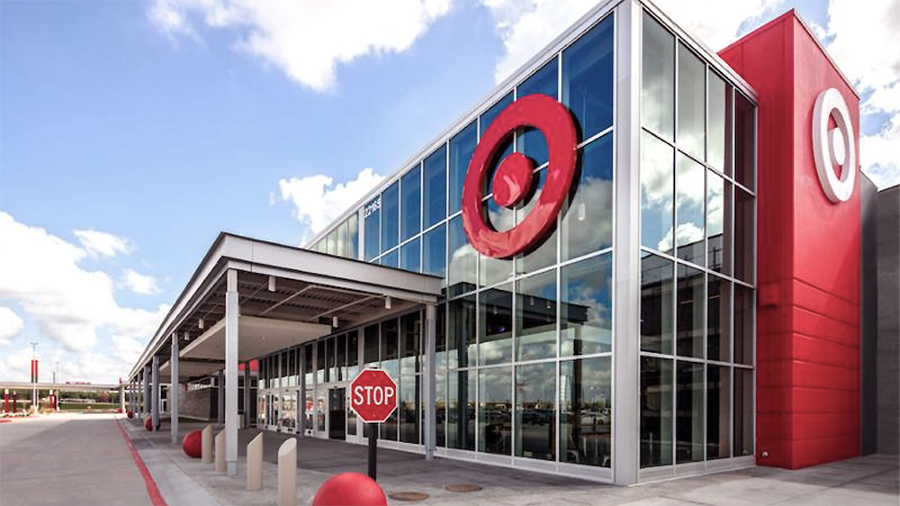Target Corp. reported a slight decline in earnings on a 0.5 percent increase in sales in the first quarter, but both earnings and sales topped Wall Street targets. Target issued soft guidance for the second quarter, marked by a low single-digit decrease in comparable sales, and said a higher shrink would impact the year’s profitability.
The company reported first-quarter GAAP earnings per share (EPS) of $2.05, down 4.8 percent from $2.16 in 2022. First quarter Adjusted EPS of $2.05 decreased 6.2 percent compared with $2.19 in 2022. The Adjusted earnings of $2.05 topped Wall Street’s consensus estimate of $1.76. Revenues at $25.32 billion were ahead of Wall Street’s consensus estimate of $25.29 billion.
Highlights of the quarter include:
- Target sales grew 0.5 percent, reflecting flat comparable sales combined with the benefit of sales from new stores;
- Strength in frequency businesses (Beauty, Food & Beverage and Household Essentials) offset continued softness in discretionary categories;
- At the end of Q1, inventory was 16 percent lower than in 2022, reflecting more than a 25 percent reduction in discretionary categories, partially offset by inventory investments to support rapidly-growing frequency categories and strategic investments to support long-term market-share opportunities;
- First quarter GAAP and Adjusted EPS of $2.05 and operating margin rate of 5.2 percent were ahead of expectations, reflecting a higher gross margin rate than last year.
Brian Cornell, chair and CEO of Target Corp., said, “We came into the year clear-eyed about the challenges consumers are facing, and we were determined to build on the trust we’ve established with our guests. It required agility and the ability to flex across our multi-category portfolio as we lean into value and the product categories our guests need most right now. Thanks to the team’s dedication, we saw an increase in guest traffic in Q1, with total sales increasing and profitability ahead of expectations.
“As we look ahead, we now expect shrink will reduce this year’s profitability by more than $500 million compared with last year. While there are many potential sources of inventory shrink, theft and organized retail crime are increasingly important drivers of the issue. We are making significant investments in strategies to prevent this from happening in our stores and protect our guests and our team. We’re also focused on managing the financial impact on our business so we can continue to keep our stores open, knowing they create local jobs and offer convenient access to essentials.
“For the full year, we are maintaining our full-year financial guidance based on the expected benefit from efficiency and cost-savings efforts and our team’s continued focus on agility, flexibility and retail fundamentals in the face of continued challenges, including inventory shrink. At the same time, we will continue making long-term investments in our stores, supply chain, and our team, positioning Target for profitable growth and market-share gains in the years ahead.”
Guidance
Based on softening sales trends in the first quarter, Target Corp. plans for a wide range of sales outcomes in the second quarter, centered around a low-single-digit decline in comparable sales. GAAP EPS and Adjusted EPS are both expected to range from $1.30 to $1.70. Wall Street’s consensus estimate had been $1.96.
For the full year, Target is maintaining its prior guidance, which includes expected comparable sales in a wide range from a low-single-digit decline to a low-single-digit increase, operating income growth of more than $1 billion, and both GAAP EPS and Adjusted EPS of $7.75 to $8.75.
Operating Results
Comparable sales were flat to last year in the first quarter, reflecting comparable store sales growth of 0.7 percent and comparable digital sales down (3.4) percent. Total revenue of $25.3 billion grew 0.6 percent compared with last year, reflecting total sales growth of 0.5 percent and a 10.2 percent increase in other revenue. Operating income of $1.3 billion in the first quarter of 2023 was down 1.4 percent from last year, driven by an increase in the company’s SG&A expense rate.
First quarter operating income margin rate was 5.2 percent in 2023, compared with 5.3 percent in 2022. First quarter gross margin rate was 26.3 percent, compared with 25.7 percent in 2022. This year’s gross margin rate reflected the benefit of lower freight costs, retail price increases, lower clearance markdown rates, and lower digital fulfillment costs driven by lower digital volume and a favorable mix of lower-cost same-day services. These benefits were partially offset by higher inventory shrink. First quarter SG&A expense rate was 19.8 percent in 2023, compared with 18.9 percent in 2022, reflecting the impact of cost inflation across multiple parts of the business, including investments in team member pay and benefits.
Interest Expenses and Taxes
The company’s first quarter 2023 net interest expense was $147 million, compared with $112 million last year, reflecting higher average long-term debt balances combined with the impact of higher floating interest rates.
First quarter 2023 effective income tax rate was 21.1 percent, compared with the prior year’s rate of 19.2 percent, reflecting the rate impact of higher discrete tax benefits for the previous year.
Capital Deployment and Return on Invested Capital
The company paid dividends of $497 million in the first quarter, compared with $424 million last year, reflecting a 20.0 percent increase in the dividend per share, partially offset by a decline in average share count.
The company did not repurchase any stock in the first quarter. As of the end of the quarter, the company had approximately $9.7 billion of remaining capacity under the repurchase program approved by Target’s Board of Directors in August 2021.
For the trailing twelve months through the first quarter of 2023, after-tax return on invested capital (ROIC) was 11.4 percent, compared with 25.3 percent for the trailing twelve months through the first quarter of 2022. The decrease in ROIC was driven primarily by lower profitability coupled with an increase in invested capital.
Photo courtesy Target
















